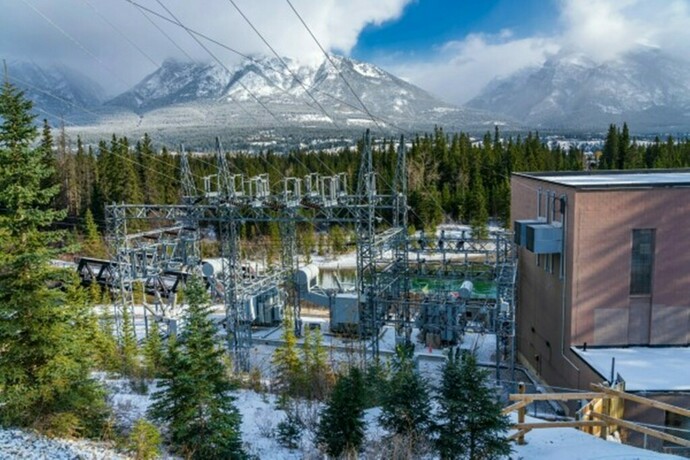Location for a planned 88 MW system for water electrolysis in Vernes, Canada. Photo: Auto-Medienportal.Net/Thyssenkrupp
While politics and business are still in the process of planning and grounding a future-oriented hydrogen policy, Thyssenkrupp, based in Essen, is already doing business with it. Not in Germany, of course, but across the Atlantic in Canada. On behalf of the state-owned power company Hydro-Quebec, the currently threatened steel company will manufacture one of the world’s first and most powerful electrolysers for the production of green hydrogen.
Chlorine Engineers, an assistant Thisenkroup Uhre from Dortmund, was recently awarded a contract to install 88 MW of water electrolysis for the Canadian energy company, following a successfully completed feasibility study. The state-owned company is one of the largest energy suppliers in North America due to vast energy resources from hydropower in the province of Quebec.
Water electrolysis is being built at Varennes on the east bank of the St. Lawrence River, a half-hour drive north of Montreal, and is expected to produce 11,100 tons of green hydrogen annually when operations begin. Both water and oxygen produced as a by-product in the electrolysis process will be used in a planned biofuel plant in which biofuels for the truck and car sector will be produced from residual waste. Hydrogen production is planned to begin by the end of 2023.
The prerequisite for green hydrogen is production with electricity from permanent sources. This current is used for the electrolysis of water flowing through water and thus the water molecules are divided into their two components, water and oxygen. Oxygen collects on the plus pole, rises into the atmosphere and escapes. Hydrogen accumulates on the minus pole, which can be intercepted and stored from there. The stored energy from the process of electrolysis of water, which is now in the molecules of hydrogen, can be re-released through the reverse reaction of hydrogen with oxygen.
Canada offers exceptional opportunities to use clean hydropower. About 61 percent of the country’s total electricity generation comes from hydroelectric plants. With only 37.5 million inhabitants, Canada ranks fourth in terms of total hydropower generation behind the United States, Brazil and China.
Hydrogen from Varennes is not initially intended for export. But in the medium term, Canada hopes such facilities can transform its vast hydro-electric potential into a clean energy export business that will power tomorrow’s fuel cell vehicles and aircraft, more integrated hydrogen economies and industrial use cases. Will feed in, and be sold as raw. material. According to Hydro-Quebec, green hydrogen will be considered a potential energy storage medium in the future. (ampnet / hrr)
home page

Reader. Organizer. General creator. Zombie fanatic. Alcohol advocate. Food junkie. Bacon ninja.





